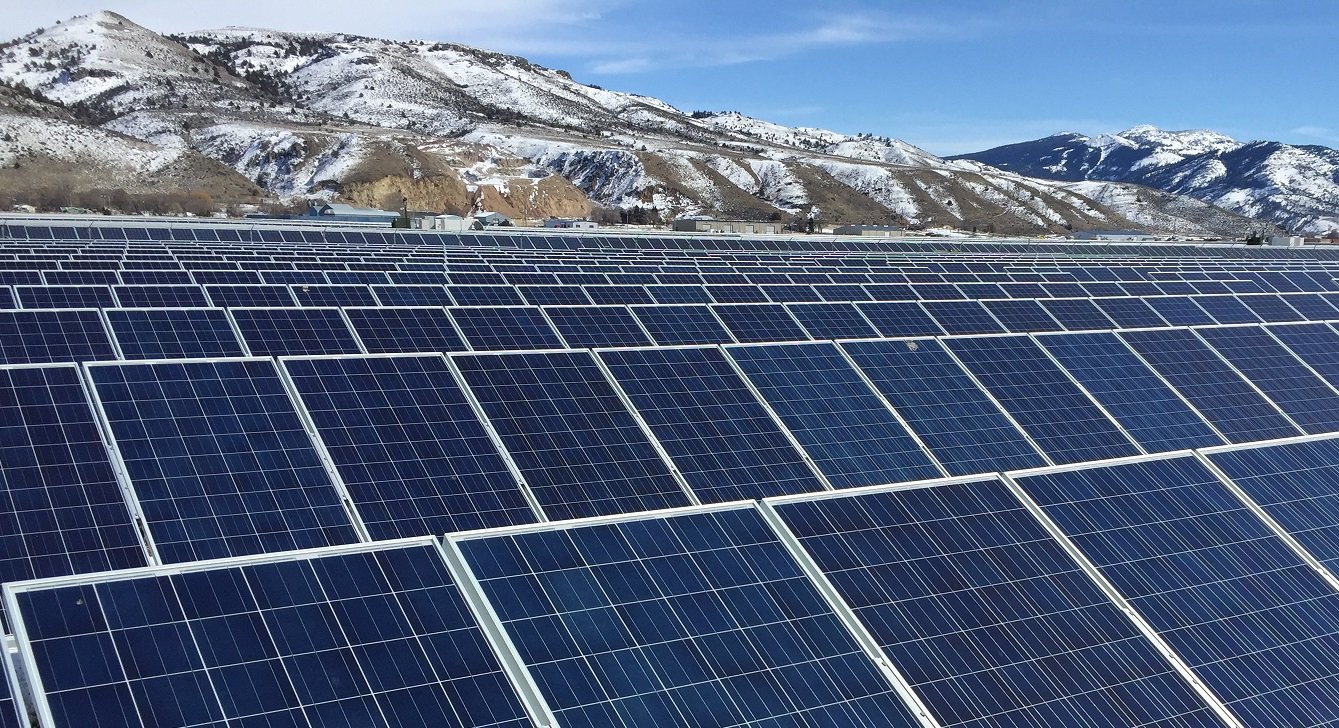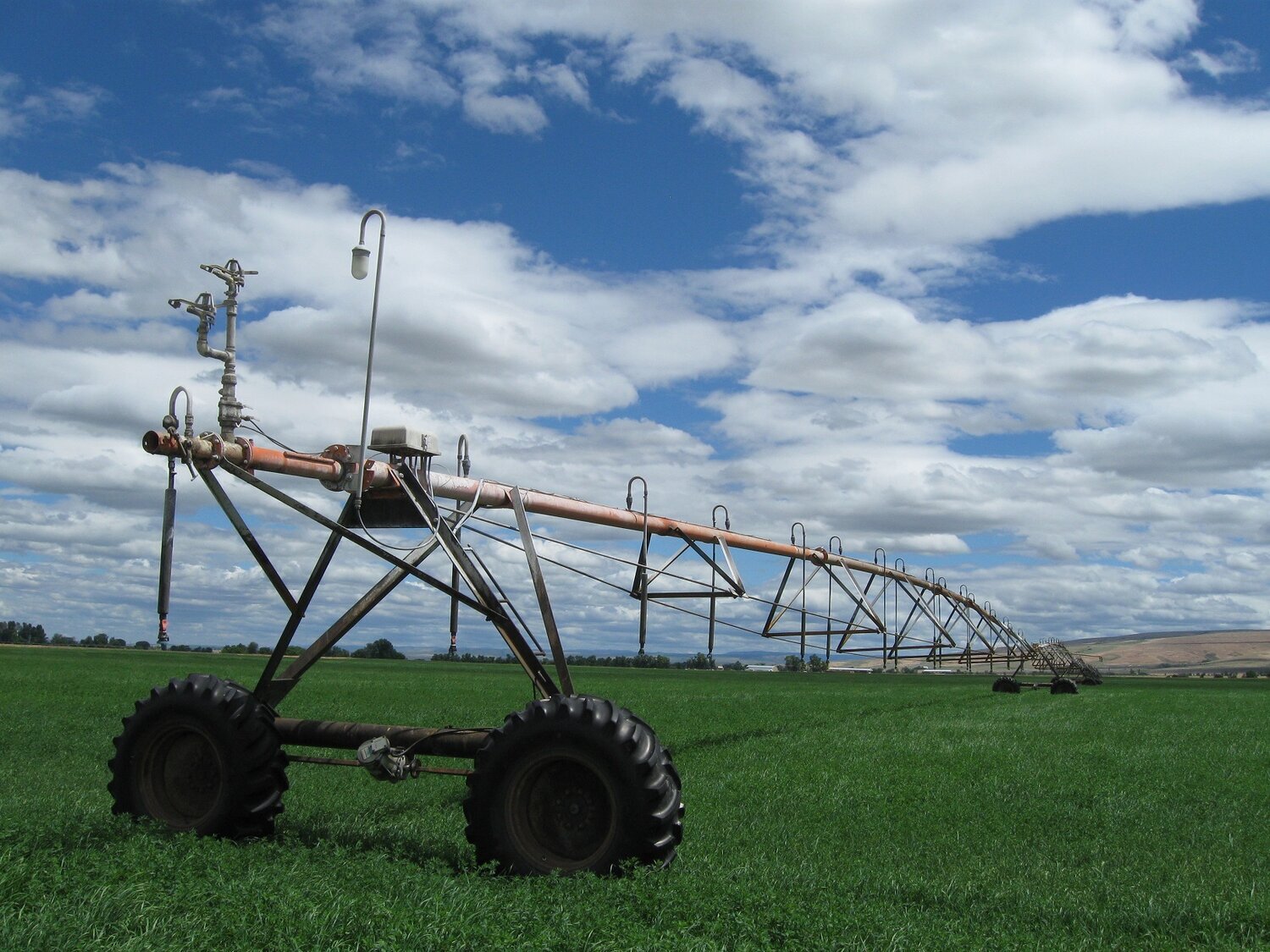2021 Year in Review
From our Director
A year ago, I reflected back on how 2020 was a year like no other. I think it’s safe to say 2021 took that torch and ran with it, as the pandemic continues to weave through our lives with vaccines that bring relief and variants that urge caution. Oregon experienced historic ice storms that left some Oregonians without power for weeks, followed by record-breaking heatwaves and another challenging wildfire season. Here at the Oregon Department of Energy, we are fast-approaching two full years with most of our staff working remotely to reduce the spread of the virus. There are even members of our Energy team who joined us in the last couple of years who I haven't yet met in person.
Looking back at a tough year for us all, I'll also say the progress our agency has made makes me hopeful for the future. From finalizing a new strategic plan that will serve as our guiding compass over the next four years, to implementing historic new legislation to help fight climate change in our state, to developing new incentive programs at our agency to support Oregon communities and wildfire victims, we are energized for this time of transition – and ready to deliver on our mission and meet our vision of a safe, equitable, clean, and sustainable future.
As we put together this Year in Review, it was hard to narrow down what to feature. It has been an incredible year, so I hope you take a moment to look back on what we’ve achieved together (you can also view past monthly newsletters on our blog). We are grateful for your engagement. You, our partners and stakeholders, have provided valuable feedback this year for energy studies, administrative rule changes, designs for new energy incentive programs, and more.
2022 will be another big year, as we officially launch those new programs, work on our next Biennial Energy Report and other energy studies, provide expertise on energy safety and emergencies, continue our analysis and guidance for proposed energy facilities, and more.
I’m proud to serve Oregon, and to lead the outstanding team of professionals here at the Oregon Department of Energy. We look forward to working with you in 2022.
Cheers to a new year –
Janine Benner
Director, Oregon Department of Energy
Our Siting Division had another fast-paced year. The team supported 10 Energy Facility Siting Council meetings and provided analysis and guidance for nearly two dozen proposed or under-construction energy facilities. The team conducted 20 site visits/inspections at facilities both under construction and in operation. We continued to manage several administrative rulemaking efforts – including updating radioactive waste disposal rules; a review of the siting standard for protected areas, scenic resources, and recreation; an update for the spent fuel storage at the former Trojan Nuclear Plant site, and others. Oregon’s energy landscape is definitely in transition as we turn the corner to 2022. We are reviewing more utility-scale, renewable solar facilities than ever before, and are seeing more proposed projects incorporating energy storage components.
We welcomed several new faces to the agency’s boards, commissions, and stakeholder groups in 2021, and expressed thanks as a long-time volunteer term came to an end. Perry Chocktoot and Phil Stenbeck both joined the Energy Facility Siting Council this year, and Marcy Grail, who first joined the Council in 2016, was named Chair. We thanked Steve March as he wrapped up his final term on the Oregon Hanford Cleanup Board, after having been involved with the Board since 2013.
In March, we finalized our 2021-2024 Strategic Plan, which provides clarity and focus for our agency – including an updated mission, vision, and values. The plan also outlines five imperatives, or high-level focus areas, to help us deliver on our mission over the next four years: expand outreach, achieve inclusive and equitable outcomes, enhance our data capabilities, modernize our programs and activities, and optimize our organizational efficiency and impact.
We published six Grounded podcast episodes on wide-ranging topics like energy history, biomass torrefaction, electric vehicles, and more. Give it a listen on our blog or your favorite podcast app.
Director Janine Benner joined Ashland Food Co-op, True South Solar, the City of Ashland, and other partners to “cut the ribbon” on Ashland Food Co-op’s new virtual net metered solar installation. ODOE was proud to support the project with an over $100,000 Renewable Energy Development Grant. The Ashland Food Co-op invested in the 528-panel, 197-kilowatt system as part of its effort to be completely powered by renewable energy by 2030. What makes the project unique is that Ashland Food Co-op already had solar on its own roof — so using an approach called virtual net metering, the Co-op was able to install even more solar on another building’s roof about three miles away! Learn more and read Janine's remarks on our blog.
The Energy team once again showed up to help our fellow Oregonians through the statewide Charitable Fund Drive this fall. Our relatively small agency set a goal to raise at least $8,500. We ended up raising nearly $12,000 for nonprofit organizations across the state!
As the 2021 legislative session closed on June 26, we celebrated a successful session, including: passing our priority bills; fulfilling our goal to be of service to decision-makers over the session (our staff participated in seven informational hearings); and using the 2020 Biennial Energy Report as a resource for lawmakers, with many articles directly related to legislation.
We received $10 million for continuing the popular Oregon Solar + Storage Rebate Program, and were also given new work to do. HB 2021 – this session’s highest-profile energy bill – not only established a 100% clean energy standard for Oregon, it also included a $50 million incentive program to promote energy resilience and renewable energy projects, housed at ODOE. Our agency will also be involved in providing funds for energy efficiency in wildfire rebuilding efforts.
In 2020, the Oregon Department of Energy led a rulemaking process to develop new energy efficiency standards for 11 products, including computers and computer monitors, commercial dishwashers, commercial fryers, and others. The Oregon Legislature took up a bill during the 2021 session to formally adopt the efficiency standards, and they were signed into law by Governor Brown on June 1. Most of the Oregon standards are now in effect for products manufactured after January 1, 2022.
In June, we announced that we were awarded a $100,000 Energy Audit and Renewable Energy Development Assistance Grant from the U.S. Department of Agriculture. We’re using the grant dollars to support energy audits for Oregon agricultural producers and rural small businesses. An energy audit may include inspection of buildings, processes, and/or equipment to analyze energy consumption and identify efficiency improvements to reduce a business’s energy use and costs. Energy audits can help prioritize potential improvement projects based on energy savings, payback period, and other factors.
Federal, local, and utility funding may be available to Oregon agricultural producers and rural small businesses that want to invest in energy efficiency improvements, and an energy audit is often a required first step in funding applications. But the cost of an audit, which can range from $5,000 up to $20,000, can be a significant barrier. ODOE will use this grant funding to pay for 75 percent of the cost of energy audits conducted through the program.
During session, legislators also asked us to carry out studies on small-scale renewable energy, renewable hydrogen, floating offshore wind, and regional transmission organizations. Three of the studies will be due later this year, while the Regional Transmission Organization study was just completed in December.
In September, we published our inaugural Biennial Zero Emission Vehicle Report, which is chock-full of data and trends about the cost of zero emission vehicle ownership, new electric vehicle models and platforms, data on electric vehicle charging infrastructure, and the positive effect transportation electrification can have on Oregon’s harmful greenhouse gas emissions, among other topics. Oregon has bold new ZEV goals, including 250,000 electric vehicles on Oregon roads by the end of 2025. As of the end of September, we have about 42,000 EVs on our roads (and climbing!).
Following the additional $10 million allocated for our Oregon Solar + Storage Rebate Program, we started taking rebate reservations in September. We’ll be working on updating administrative rules for the program in early 2022. Sign up for email updates to keep in the loop.
In the event of an emergency, the Oregon Department of Energy is a responding agency, tasked with coordinating distribution of petroleum fuels for critical services. Our Oregon Fuel Action Plan, first published in 2017, outlines the steps we would take following an emergency – from assessing damage and needs to sharing public information and coordinating distribution of fuel. The plan can be scaled up for a significant emergency like an earthquake or scaled down for a smaller or more localized issue. ODOE has implemented parts of the plan over the last several years for fueling concerns during the 2017 total solar eclipse, as well as during frequent winter storms and wildfires.
Summer 2021 presented a new fuel challenge: jet fuel delivery. Deanna Henry, ODOE’s Emergency Preparedness Manager, responded over the summer to requests for additional jet fuel deliveries to small airports in southern and northeast Oregon to support firefighting missions. While there was no shortage of jet fuel in Oregon, there were logistical challenges connecting available supplies with fuel haul trucks and drivers to get the much-needed fuel to the local airports supporting firefighting efforts. Deanna worked with state, local, and federal partners, as well as with the private sector, to ensure firefighters had the fuel they need to continue to fight wildfires.
On November 15, President Biden signed the $1.2 trillion Infrastructure Investment and Jobs Act into law. Oregon expects to receive funding for energy efficiency, weatherization, grid resilience, and more over the next five years. Learn more.
Sign up to receive our monthly newsletter by email.







